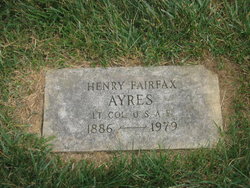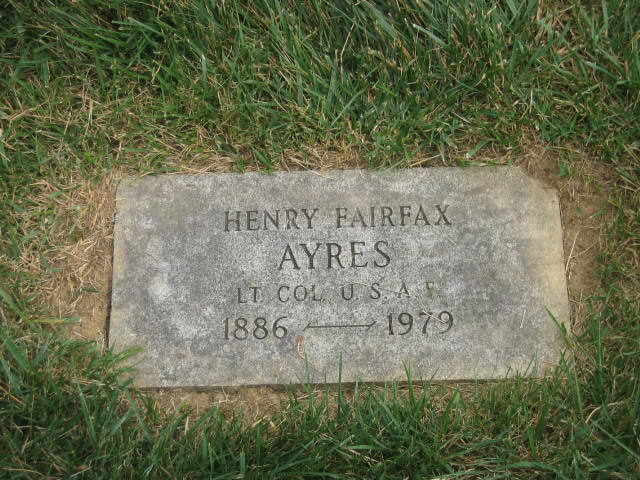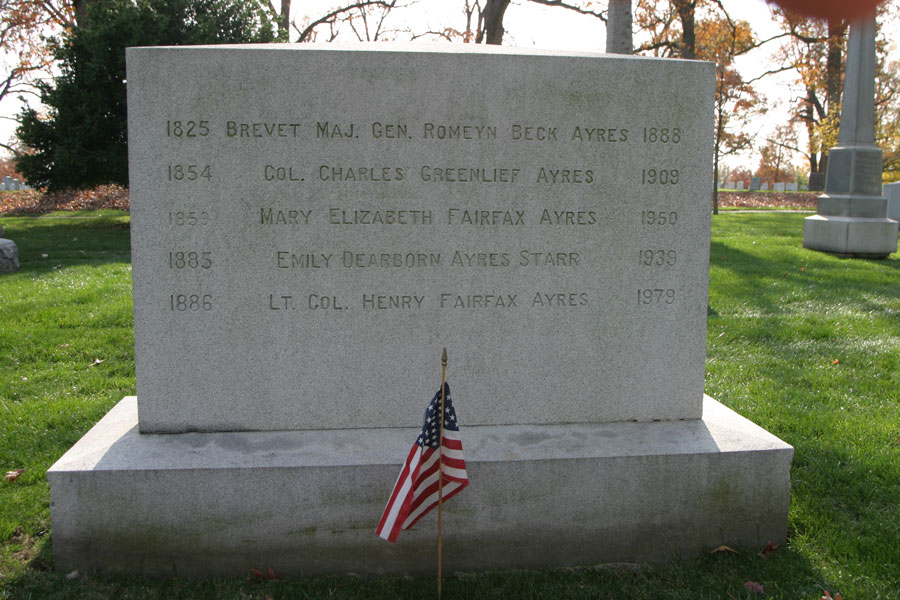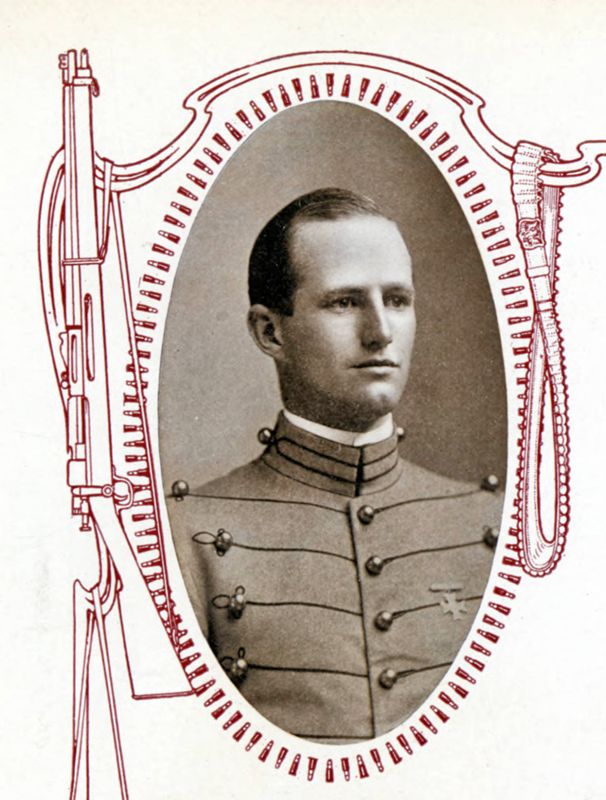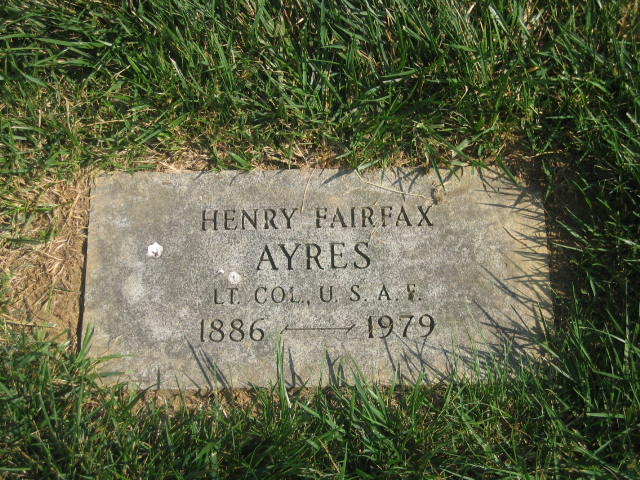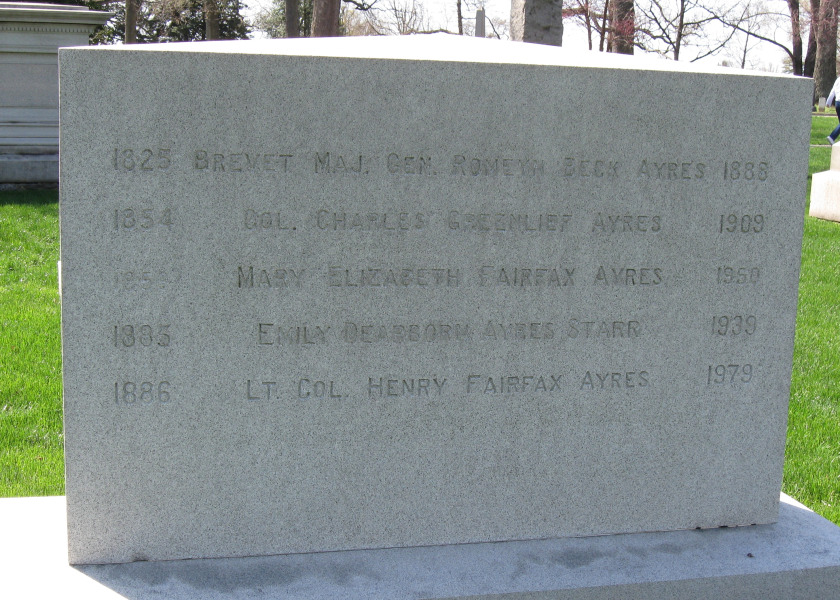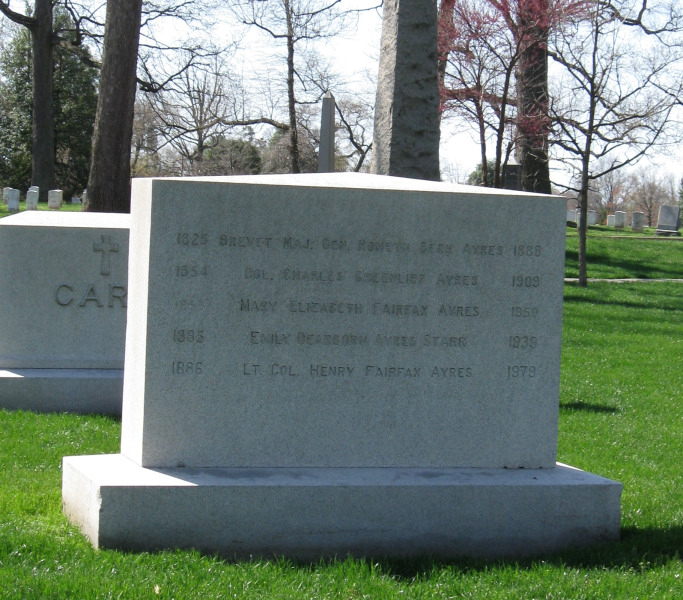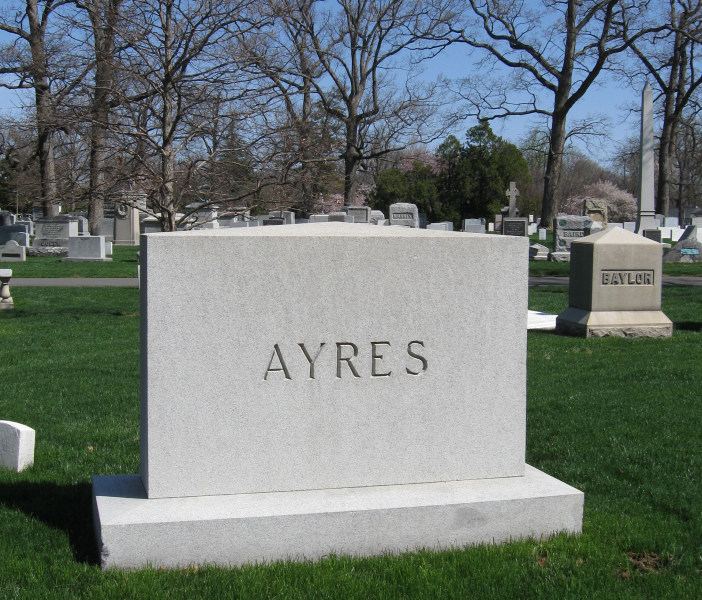*****
He was born April 23, 1886 in Oak Hill, the former home of President James Monroe in Aldie, Virginia. He was the son of Colonel Charles G. Ayres and Elizabeth Fairfax Ayres. His grandfathers served on opposite sides in the Civil War - Major General Romeyn B. Ayres, USMA Class of 1847, with the Union forces and Colonel John Walter Fairfax with the Confederacy. In 1675, his seventh great-grandfather, Sergeant Joint Ayres, was killed by Indians while serving as a selectman of Brookfield, Massachusetts. As a toddler he was in the cavalry camp at Wounded Knee, the last major battle against the Indians, in which his father fought. He recalled many stories he heard from relatives about the Civil War. He followed four uncles to Virginia Military Institute, where he was a middleweight boxing champion. At West Point he played end on the football team for two years and in 1905, was an intercollegiate fencing champion. He resigned from the service after graduation leave in May 1908 and worked for a finished castings company as an apprentice and foundry foreman. Later, he was manager of the New York office of the Union Spring and Manufacturing Company and was noted for perfecting a pressed steel railroad brace for the Company. In July 1917 during World War I, he served in France and was cited for gallantry after action in the Argonne Forest and under the 17th French Corps east of the Meuse. He returned to civilian life as president of the Navy Gear Manufacturing Company in Port Chester, New York, from 1919 to 1922 and later became a securities broker in Rye, New York. In 1937, he moved to Shaftsbury, Vermont where he became interested in farming and maple syrup production. He devised a milk sterilizer, a farm fire alarm and a syrup pressure filter. He also invented the hydrotherm, a device for weighing maple syrup, which was sold throughout the United States and Canada. In 1949, as chair of the legal committee of the Vermont Sugarmakers Association, he helped pass a syrup-grading law and pushed the concept of pricing syrup at $7 per gallon. He was a charter member of the Bennington County Regional Commission and retired as Shaftsbury delegate in 1976. He designed a crosswalk system that offered safety to pedestrians while easing vehicular turns and personally sold it to the Bennington selectmen. He was a Master Mason and joined the organization in 1921. He donated land and designed the present temple for the Red Mountain Lodge in Arlington. He was a Life member of the Manchester Veterans of Foreign Wars Post and belonged to the Arlington American Legion Post. During World War II he entered the service as a colonel in the Air Force, convoying pilots and flight crews to the Pacific and to Europe. He served in New Guinea in 1944 and in Rome and Anzio, Italy, in 1945, earning a Commendation Ribbon and three Battle Stars for his service. In 1945, he was injured while on a patrol torpedo (PT) boat reconnaissance raid in the Dover Strait off the coast of France. Survivors included his wife, Mary Elizabeth Sherman Ayres, a native of New Bedford, Massachusetts; a son by a previous marriage, Henry F. Ayres Jr. of Greenwich, Connecticut; one grandson of Greenwich; one nephew and several cousins.
Source: United States Military Academy Association of Graduates memorial.
*****
He was born April 23, 1886 in Oak Hill, the former home of President James Monroe in Aldie, Virginia. He was the son of Colonel Charles G. Ayres and Elizabeth Fairfax Ayres. His grandfathers served on opposite sides in the Civil War - Major General Romeyn B. Ayres, USMA Class of 1847, with the Union forces and Colonel John Walter Fairfax with the Confederacy. In 1675, his seventh great-grandfather, Sergeant Joint Ayres, was killed by Indians while serving as a selectman of Brookfield, Massachusetts. As a toddler he was in the cavalry camp at Wounded Knee, the last major battle against the Indians, in which his father fought. He recalled many stories he heard from relatives about the Civil War. He followed four uncles to Virginia Military Institute, where he was a middleweight boxing champion. At West Point he played end on the football team for two years and in 1905, was an intercollegiate fencing champion. He resigned from the service after graduation leave in May 1908 and worked for a finished castings company as an apprentice and foundry foreman. Later, he was manager of the New York office of the Union Spring and Manufacturing Company and was noted for perfecting a pressed steel railroad brace for the Company. In July 1917 during World War I, he served in France and was cited for gallantry after action in the Argonne Forest and under the 17th French Corps east of the Meuse. He returned to civilian life as president of the Navy Gear Manufacturing Company in Port Chester, New York, from 1919 to 1922 and later became a securities broker in Rye, New York. In 1937, he moved to Shaftsbury, Vermont where he became interested in farming and maple syrup production. He devised a milk sterilizer, a farm fire alarm and a syrup pressure filter. He also invented the hydrotherm, a device for weighing maple syrup, which was sold throughout the United States and Canada. In 1949, as chair of the legal committee of the Vermont Sugarmakers Association, he helped pass a syrup-grading law and pushed the concept of pricing syrup at $7 per gallon. He was a charter member of the Bennington County Regional Commission and retired as Shaftsbury delegate in 1976. He designed a crosswalk system that offered safety to pedestrians while easing vehicular turns and personally sold it to the Bennington selectmen. He was a Master Mason and joined the organization in 1921. He donated land and designed the present temple for the Red Mountain Lodge in Arlington. He was a Life member of the Manchester Veterans of Foreign Wars Post and belonged to the Arlington American Legion Post. During World War II he entered the service as a colonel in the Air Force, convoying pilots and flight crews to the Pacific and to Europe. He served in New Guinea in 1944 and in Rome and Anzio, Italy, in 1945, earning a Commendation Ribbon and three Battle Stars for his service. In 1945, he was injured while on a patrol torpedo (PT) boat reconnaissance raid in the Dover Strait off the coast of France. Survivors included his wife, Mary Elizabeth Sherman Ayres, a native of New Bedford, Massachusetts; a son by a previous marriage, Henry F. Ayres Jr. of Greenwich, Connecticut; one grandson of Greenwich; one nephew and several cousins.
Source: United States Military Academy Association of Graduates memorial.
Family Members
Sponsored by Ancestry
Advertisement
Explore more
Sponsored by Ancestry
Advertisement
